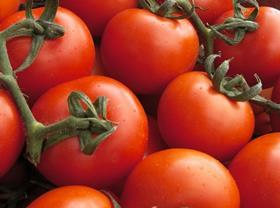
A new GM tomato that produces a grape compound found in red wine and is believed to help fight diseases such as cancer has been developed by John Innes scientists.
The study is being described as a model for large-scale production of medicinal compounds in fruit or vegetables, which are currently available in smaller quantities in products such as grapes or soy.
By inserting a protein called AtMYB12, found in the garden weed thale cress, tomatoes could be turned into natural producers of medicine used to combat a range of diseases, scientists said. They believe the same technique could be used to manufacture other compounds that form the basis of many medicines.
The study found that same amount of the antioxidant chemical resveratrol as would be found in 50 bottles of red wine was produced by tomatoes that had been inserted with an activation enzyme, while another tomato was developed to produce genistein - a soybean compound that may help prevent breast cancer. Resveratrol is said to combat heart disease, cancer, diabetes and Alzheimer's disease.
“Our study provides a general tool for producing valuable phenylpropanoid compounds on an industrial scale in plants, and potentially production of other products derived from aromatic amino acids,” said Professor Cathie Martin of the John Innes Centre.
'Our work will be of interest to different research areas including fundamental research on plants, plant/microbe engineering, medicinal plant natural products, as well as diet and health research.'
Another researcher, Dr Yang Zhang, said: 'Medicinal plants with high value are often difficult to grow and manage, and need very long cultivation times to produce the desired compounds.
“Our research provides a fantastic platform to quickly produce these valuable medicinal compounds in tomatoes. Target compounds could be purified directly from tomato juice. We believe our design idea could also be applied to other compounds such as terpenoids and alkaloids, which are the major groups of medicinal compounds from plants.”
The study was published in scientific journal Nature Communications this week.



